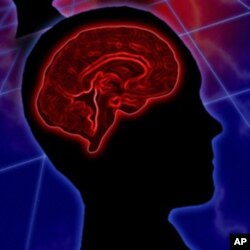People who have been blind from birth use visual parts of their brain to hone their sense of sound and touch, according to new research. These keen senses could be used to help the blind better navigate their world, according to Georgetown University professor Josef Rauschecker.
The new study has added another piece to the puzzle as scientists learn more about how the brains of blind people work.
Years ago, scientists began to learn that certain parts of the brain were dedicated to certain purposes. One section was in charge of breathing; another dealt with the sense of smell. Then came the realization that the brain was changeable - or "plastic" - and could sometimes reorganize itself when conditions required.
Rauschecker has been studying the question: Could that account for the idea that blind people compensate for their vision loss by improving their other senses?
"Just think of Ray Charles, Stevie Wonder, so many," he says. "Andrea Bocelli, if you prefer classical music."
In previous research, Rauschecker and other scientists have found that in blind people, the visual cortex, the part of the brain that processes sight, can be used to process sound and touch. But that visual cortex is itself divided into discrete modules that perform different visual functions.
"Now, the question is: do blind people have that same or similar functional organization, that these modules actually stay put and just get re-dedicated to touch and hearing? And the answer is yes," says Rauschecker.
To come up with that answer, the researchers used a functional MRI scanner to visualize brain activity as blind people in the study experienced various tactile and audible sensations. The scientists could see what part of the brain was being used to process the sensory inputs. For example, when stereo sounds were used to simulate a three-dimensional space, the brain's spatial module was activated, as it would be in a sighted person.
Rauschecker says this study and earlier research has enabled collaborators to build a prototype device to process images taken by a camera into sensations that could be used by a blind person wearing it.
"So what we're hoping to do is build this device that would transform, basically, visual information into auditory information, and then tap this amazing reservoir of the blind brain to process sounds and tactile information."
Joseph Rauschecker and colleagues describe their work in the journal Neuron.









